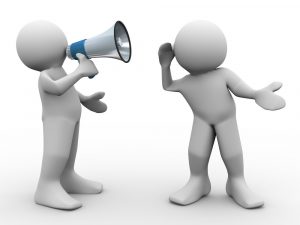What is communication?
Effective communication is the foundation of healthy relationships and successful collaborations. By recognising the common pitfalls and actively working to overcome them, we can enhance our ability to connect with others, resolve conflicts, and achieve our goals.
Communication is not just about speaking; it’s about understanding and being understood. In a world full of noise, the ability to communicate clearly and empathetically is a powerful skill that can lead to deeper connections and greater success in all areas of life.
Communication is more than just the exchange of words. It’s a complex process that involves verbal and non-verbal cues, listening, empathy, and context. A single message can be interpreted in many ways, depending on factors such as tone, body language, and the receiver’s emotional state. The sender’s intentions may not always align with the receiver’s perceptions, leading to misunderstandings.
For example, a simple text message like “We need to talk” can be interpreted as either a neutral request or a signal of bad news, depending on the context and the relationship between the individuals involved. The lack of non-verbal cues in digital communication often exacerbates these misunderstandings, making it easy for messages to be misconstrued.
Common Communication Issues
Lack of Clarity: Ambiguity is one of the most common communication issues. When messages are not clear, the receiver is left to fill in the gaps, often leading to incorrect assumptions. Clear, concise communication helps prevent misunderstandings.
Assumptions and Preconceptions: We all bring our own experiences and biases into conversations. These preconceptions can color our understanding of what others are saying. Assuming that the other person shares your viewpoint or understands your intent without clarification can lead to communication breakdowns.
Poor Listening Skills: Effective communication is a two-way street. Many people focus on what they want to say rather than actively listening to the other person. This can lead to missed information,misinterpretation, and a lack of connection.
Emotional Barriers: Emotions can cloud judgment and hinder effective communication. Anger, frustration, or anxiety can make it difficult to express oneself clearly or to understand the other person’s perspective. Emotional barriers often lead to defensive communication, where the focus shifts from understanding to self-protection.
Cultural Differences: In a globalized world, cultural differences are a significant factor in communication issues. What might be considered polite and respectful in one culture could be seen as rude or dismissive in another. Understanding and respecting cultural nuances is essential for effective communication in diverse settings.
Strategies to Overcome Communication Issues
Practice ActiveListening: Active listening involves fully focusing on the speaker, understanding their message, responding thoughtfully, and remembering what was said. It requires patience, empathy, and an open mind. By practicing active listening, you show respect for the other person’s perspective and reduce the likelihood of misunderstandings.
Be Clear and Concise: Avoid ambiguity by being as clear and concise as possible. Use simple language, define your terms, and ensure that your message is understood. When in doubt, ask the receiver to paraphrase your message to confirm understanding.
Check Your Assumptions: Before jumping to conclusions, consider whether your assumptions are based on fact or interpretation. Clarify any points of confusion with the other person to ensure that your understanding aligns with their intentions.
Manage Emotions: Be aware of your emotional state and how it might affect your communication. If emotions are running high, it might be best to take a break and return to the conversation later when you can engage more calmly and rationally.
Cultivate Cultural Awareness: Learn about the cultural backgrounds of the people you communicate with, especially in a professional setting. Be mindful of cultural differences in communication styles, body language, and etiquette. This awareness can help you navigate cross-cultural interactions more effectively.
Use Feedback: Encourage feedback to ensure that your message has been received and understood as intended. This can be as simple as asking, “Does that make sense?” or “What do you think about this?” Feedback provides an opportunity to correct misunderstandings before they escalate.
Useful websites
Zencare – communication issues
Very Well Mind – why communication in relationships is so important
Mind body green – 10 types of communication issues





